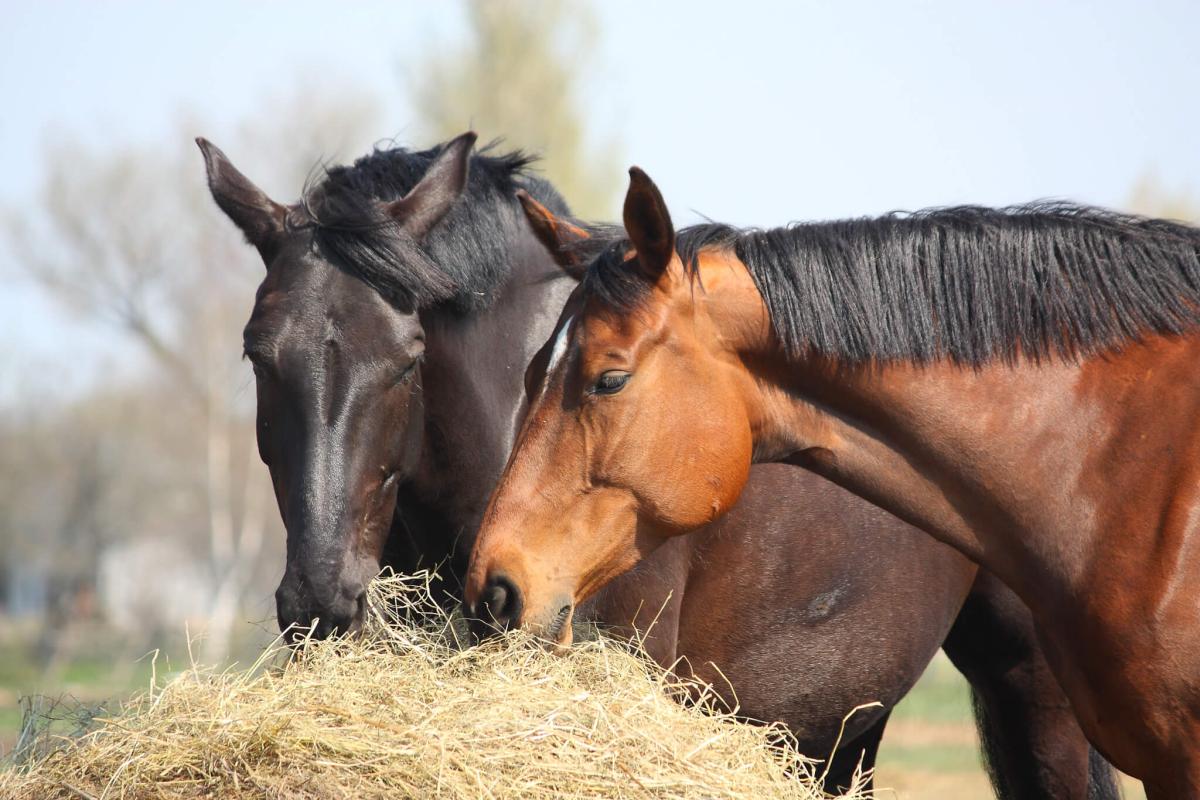
When it comes to feeding horses, the choice of forage is crucial in maintaining their health and well-being. Two standard options are hay and haylage, each with benefits and considerations for feeding horses. Understanding the differences between these two types of forage can help you make the best decision for your horse.
As natural grazers, horses are designed to consume fibrous plant material continuously throughout the day, which supports their digestive system and prevents issues such as colic and gastric ulcers. Forage also provides essential nutrients, promotes natural chewing behaviour, and keeps horses mentally stimulated.
Haylage vs hay
Depending on their needs and circumstances, there are several ways to provide forage to horses. Grass is the most natural option, offering fresh forage when horses are turned out in paddocks. However, access to quality pasture isn’t always possible year-round. Horse hay is a convenient alternative in various types like meadow, ryegrass, or Timothy hay. It should be free of dust and mould to avoid respiratory problems. Haylage, which is softer and slightly fermented, is another option that provides higher moisture content and can be beneficial for horses with poor dentition or those requiring extra energy.

What is hay?
Hay is dried grass or legumes that are harvested and baled for storage. It serves as a staple forage for most horses and provides essential fiber that supports digestive health. Common types of hay include:
Grass Hay: Examples include timothy, orchard grass, and brome. Grass hay is lower in protein and energy, making it suitable for most horses.
Legume Hay: Examples include alfalfa and clover. These hays are richer in protein and calcium, making them ideal for horses with higher nutritional needs, such as lactating mares or young, growing horses.
What is haylage?
Haylage is semi-fermented forage made from grass or legumes that is baled at a higher moisture content than hay. After baling, it is wrapped in airtight plastic to undergo anaerobic fermentation, which preserves the forage and prevents spoilage. Haylage is commonly used in regions with wet climates where it is challenging to dry hay properly.
Key differences between hay and haylage
Moisture Content: Horse hay is dried to a moisture content of about 10-15%, while haylage contains 40-60% moisture. The higher moisture content in haylage makes it softer and more palatable for some horses.
Nutritional Content: Haylage generally has higher energy and nutrient levels due to less drying and nutrient loss. Hay, while lower in energy, is suitable for horses with lower nutritional requirements.
Fermentation: Haylage undergoes a fermentation process that can benefit some horses by making nutrients more digestible. However, improper fermentation can produce spoiled or toxic feed, so quality control is critical.
Both hay and haylage can be excellent forage options for horses when managed correctly. By understanding their differences and considering your horse’s needs, you can make an informed choice supporting their health and well-being. Always consult a veterinarian or equine nutritionist to ensure your feeding practices are tailored to your horse’s specific requirements.
Feeding hay and haylage to horses
Haynets are a popular choice for feeding hay and haylage. They help regulate the pace of consumption, reduce waste, and mimic natural grazing behaviour. Slow-feed haynets have smaller holes, encouraging slower, more consistent eating. They’re particularly beneficial for horses prone to bolting their food or for those on restricted diets.
Hay feeders provide an excellent way to keep hay clean, off the ground, and reduce wastage. Wall-mounted feeders are ideal for stables, these can hold a substantial amount of hay, ensuring your horse has access throughout the day.
While not as efficient in preventing waste, feeding hay or haylage loose on the ground mimics natural grazing habits and is often the most natural and comfortable method for horses. Ensure the area is clean and free from mud or manure to reduce the risk of contamination or ingestion of sand, which can lead to colic.
